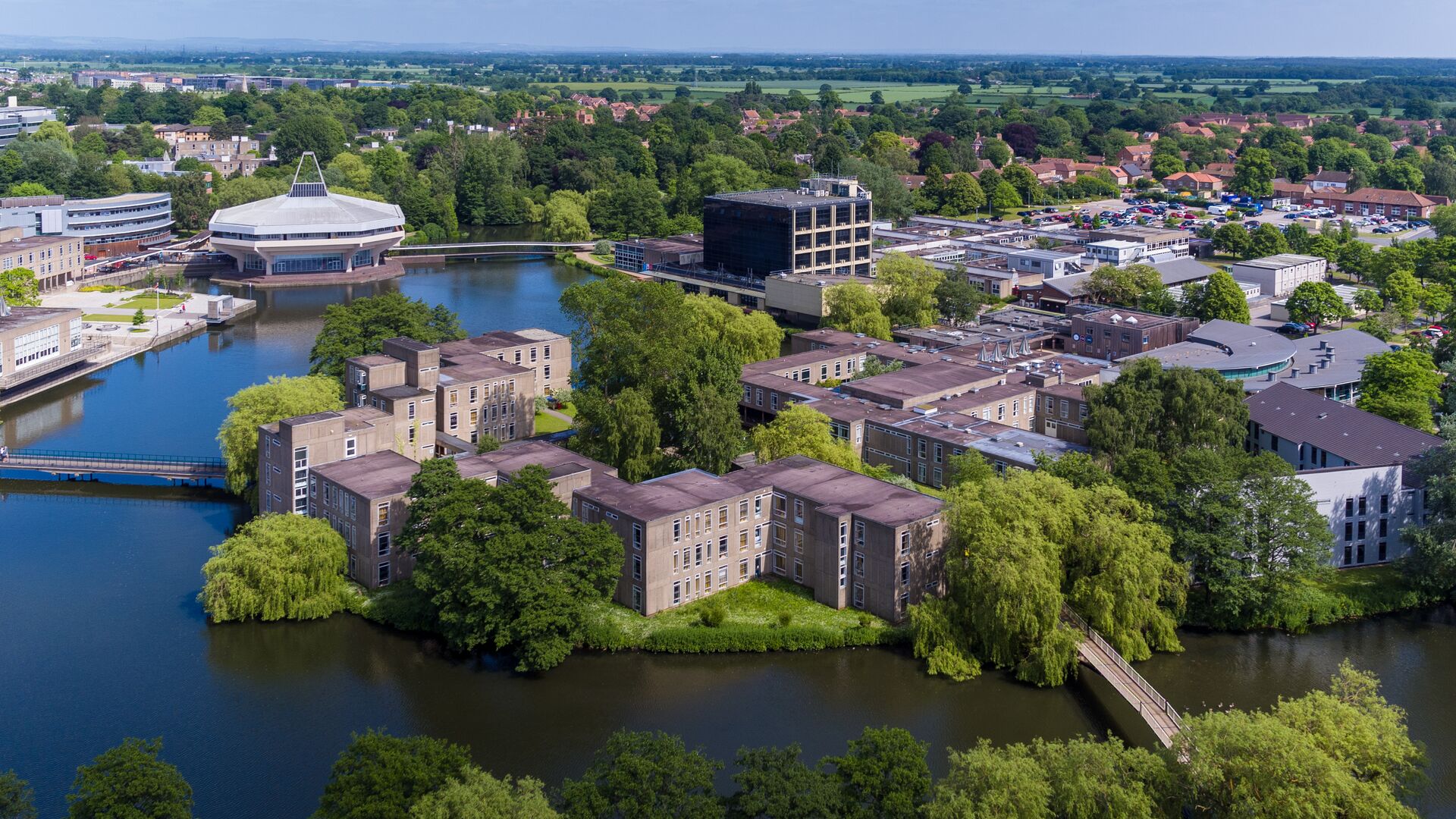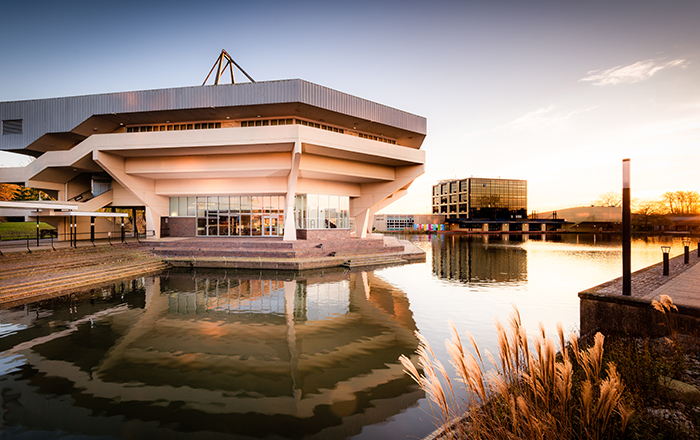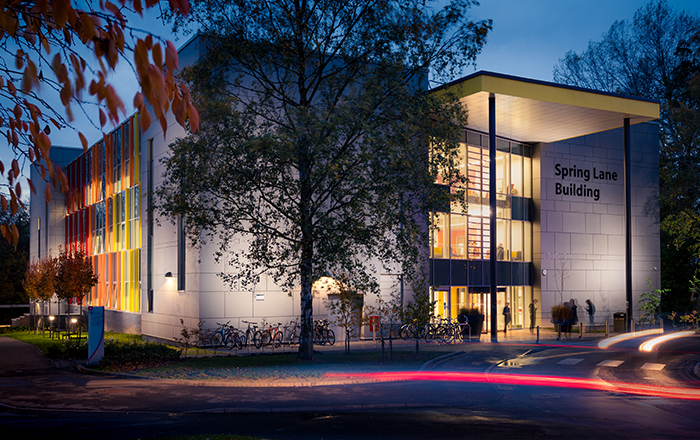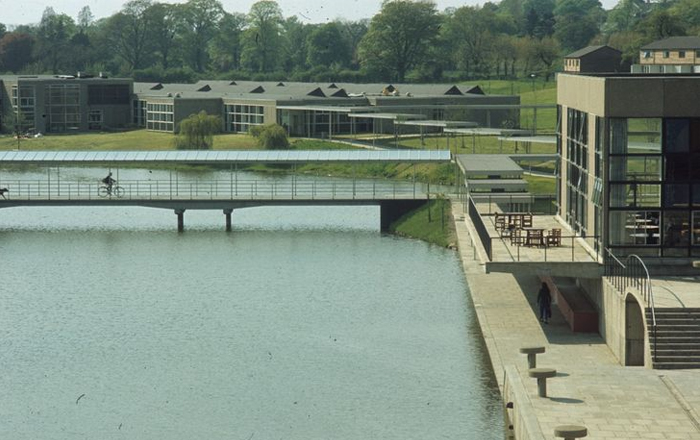
Campus for the Future
We are evolving our campus to give our staff, students and visitors the best experience during their time at York.
When the University was founded in 1963, the development plans focused on creating a campus that felt connected and like a neighbourhood with a broad mixture of social, residential and academic places and spaces.
This focus remains at the heart of who we are today - a close knit community and neighbourhood.
Over recent years, the ways in which we socialise, research and learn within our campus space have evolved significantly, and so too must our approach to campus development and technical infrastructure.
Our aim today is to use our space effectively and sustainably, to maintain the connected nature of our campus, and achieve the right balance of buildings, infrastructure and shared spaces to meet the needs of all in our community.
Modern day challenges
We have a limited physical campus footprint within the University, and yet our need for certain types of buildings - such as increased student residences - continues to grow.
Following the pandemic, we continue to see high demand from both staff and students to work and study online, in a hybrid fashion. Footfall patterns on our campus are significantly different to what they were just a few years ago.
These factors, coupled with ageing buildings, and growing pressures on costs and carbon usage, mean it’s vital we take an active approach to managing our campus development.

The future of our campus: Sustainable, Smart, and Space-saving
We must balance cost and space utilisation, alongside our long-term vision for a more efficient, sustainable and community-orientated campus.
We will therefore focus our efforts in the following areas:
Some of our oldest buildings, in particular on Campus West, were not designed to today’s standards. They have poor facilities and accessibility, and their lack of insulation means they take much more money and energy to heat than our more modern buildings. This adds to our carbon emissions and maintenance costs.
New patterns of hybrid working post-Covid, as well as insights from our building usage trials, have shown that usage levels of some buildings on campus are significantly lower at certain times.
Engaging our community
In collaboration with users of these impacted spaces, the University has begun a programme of activity to start relocating activity out of our poorest quality, high-cost buildings.
Lots of factors are taken into account when assessing whether or not a building is suitable for closure or repurposing. This includes understanding the needs of those utilising the space, the current condition of the building, the cost of maintenance and refurbishment as well as carbon efficiency gains through changing the building’s usage.
We will engage directly with the impacted users of the buildings or spaces, ensuring there is open and transparent dialogue about our latest thinking.
An evolving programme of work
This will be an ongoing programme, and will take several years to complete.
Vacated buildings will either be repurposed (for lower cost activities only, such as storage), mothballed, demolished or sold. Mothballed buildings will have no heating or services and will not be accessible for use.
As the programme progresses, and as we understand more about the impact of changes in more detail, our plans will evolve. This means we won’t be sharing a list of buildings in scope, as thinking may change and/or timescales may vary significantly.
Instead, we will work directly with users of the space to share proposals and tackle the benefits and challenges together.
We are currently working with users of spaces within the following buildings:
- The Hive, Heslington Main Street - Campus West - Full closure
- Wentworth Nucleus - Campus West - Full mothballing planned
We are aware that hybrid working and learning has changed the way our buildings are utilised. At certain times, large parts of our campus estate are significantly underutilised.
This leads to wasted energy and overhead costs, as well as contributing to feelings of isolation for those studying or working in emptier spaces.
By examining usage data insights, and trialling different ways to use our spaces more flexibly, we are starting to understand how we might share our spaces more efficiently and effectively.
For example, through sharing bookable workspaces or managing opening hours of certain buildings, we are encouraging our community to use our high-quality buildings more.
We need to share our modern, quality buildings more with each other. This means we can focus on enhancing collaboration and connection across our community in the best spaces, whilst repurposing, closing or mothballing unsuitable ones.
You can find out more information on some of the initiatives we’re trialling on smart use of energy and servicing buildings.
Our digital estate has become progressively more important over the last few years. As staff and students move regularly between online and in-person interactions, they’re spending less time in many of our buildings, and more time relying on our digital infrastructure, including things such as our data centres, operating systems and software infrastructure.
Our Integrated Infrastructure Plan (IIP), our campus masterplan, was revisited in 2023 to reflect the challenges the University faces. The updated plan places more ambition on digital transformation and integration with our current campus estate, and less on major building projects.
Find out more about the Integrated Infrastructure Board.
Like all institutions across our sector, we continue to face increasing costs, including the impact of inflation in the UK and uncertainty in global markets.
This is adding pressure on our financial planning and it is important we respond to this, by re-evaluating our immediate investment priorities while being mindful of our longer-term goals.
One significant area under review is our new building development plans. For example, we have agreed in early 2024 to postpone our new Student Centre, as well as our new location for the School of Physics, Engineering and Technology, for a minimum of three years, whilst we revise our capital expenditure.
Postponing new developments is a difficult decision, and we understand it is disappointing for future users of the space.
In the short-term, we will continue to invest in re-developing key existing spaces on our campus. We will also prepare the groundwork for future spaces, continuing with demolition work and making good our grounds.
In the long-term, we are focused on how we will use the space freed up to meet the most urgent needs of our community - for example, how we can address the need for more student residences on campus and how we use workspaces in our better buildings that can be shared by different colleagues.


